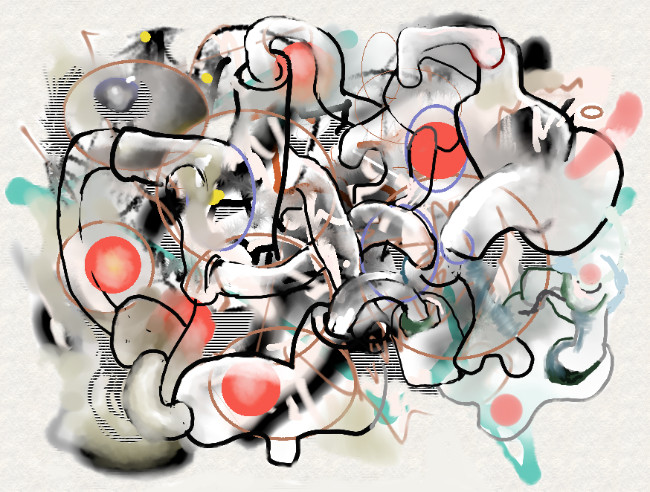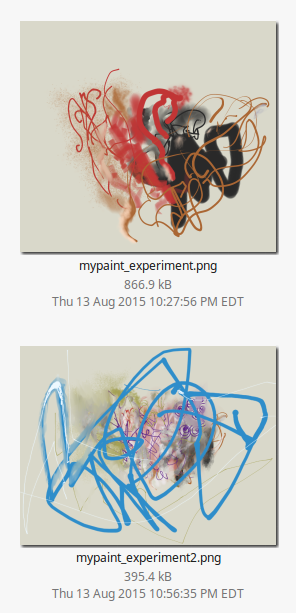
Above: more thumbnails of paintings I've been doing using Linux MyPaint.
Was looking at Peter Halley's portfolio pages -- you click through dozens of his cell-and-conduit paintings, all roughly the same size thumbnails. It's an intriguing design exercise -- after so many years of production, there are hundreds of variations on the colors and basic shapes he employs. Halley wrote an essay in the '80s about Frank Stella and the simulacrum, arguing that Stella was neither the last formalist nor a "bureaucrat" but a post-modernist emerging early, in the 1960s. Halley's own career continued the logic of ironic serial production. He could even be said himself to have anticipated 3D printed canvases, since the actual objects he makes have a kind of chalky, plastic perfection. All those coats of acrylic could be passes of the print head, over and over until the surface is built up.
The ultimate logic of postmodern simulation would be to bypass the objects altogether and just have the digital archive of patterns. The art becomes more easily transmissible, gets out to more people, and doesn't add bulk matter to the universe.




